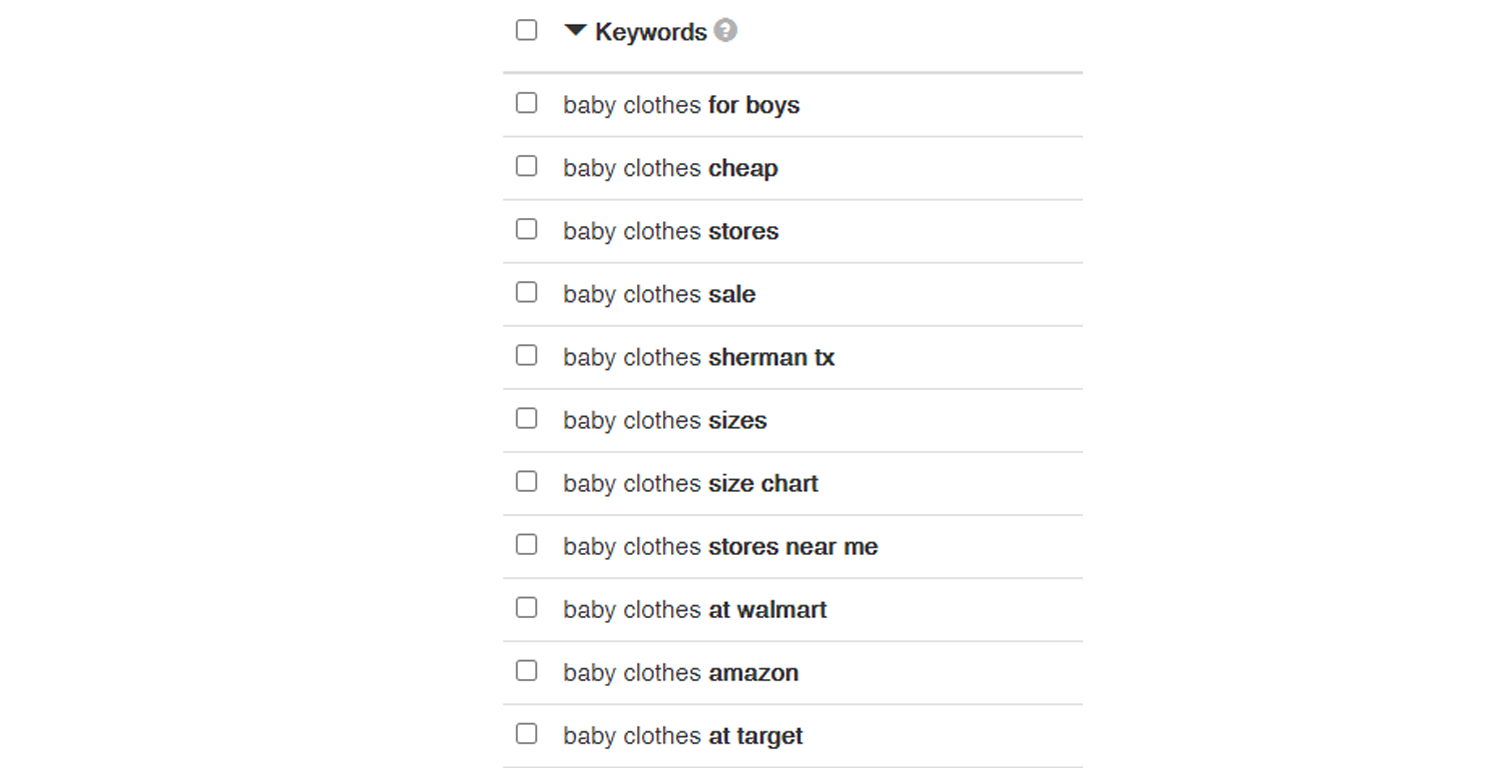I can’t imagine an army general ever won a battle by simply “winging it.”
Military leaders study their adversary, tracking their patterns and plotting their course.
They look for weaknesses and opportunities, and they use that information to devise a strategic plan of attack to increase the likelihood of a victory.
Creating search optimized content isn’t much different.
You can’t just write about any old subject, tuck in a few keywords, post it on your site, and expect it to deliver results.
Driving profitable traffic to your site and generating high-quality inbound leads takes in-depth research, careful planning, and developing a thoughtful SEO content strategy.
Once focused on using the right keywords, content marketing is now all about writing to solve the problems of your audience.
To provide meaningful and useful information, you need to understand who your prospects are and what they need from you. This insight guides you in creating content with a purpose.
Writing with intent enables you to increase the number of website visitors you gain through organic search.
This kind of traffic can net you thousands of quality leads and close tons of sales.
The question is, how do you create your own effective SEO content strategy?
As Baroness Maria von Trapp advised in the “Sound of Music,”
“Start at the very beginning, a very good place to start.”
Focus first on the fundamental basics of creating content and keep SEO at the front of your mind as you continue to build on that foundation.
If all you hear are crickets after posting your content, it’s time to take action and begin strategizing.
Here are seven tactics to help you create winning content that maximizes SEO opportunities.
1. Identify Your Target Audience
SEO is all about creating a positive user experience and delivering the most relevant information possible.
To create content that resonates with your audience, you must first know who that audience is.
Here are some things to ask yourself to help zero in on your target market:
Who are your current customers?
Identifying key characteristics of your current customers can give you clues as to who your prospects might be.
Look at quantitative and qualitative data, from age and gender to purchase behavior and web page engagement. All of these can help paint a picture of whom you should be writing for.
Who is attracted to your competition?
Discover what kind of people are engaging with your competitors. Look at social media accounts, blog comments, and customer reviews.
Of the people who are satisfied, what is it that they like? For those who are disgruntled, are you able to meet their needs?
There’s a lot to learn from businesses like yours.
What do you have to offer?
Think about the products and services you offer, and what they bring to your prospects.
Who would benefit from those results?
How are you perceived?
Do you really know how your prospects feel about you and your products?
Survey your audience to understand what you’re doing well, what you could improve, and what kind of information people want to learn from you.
Once you’ve gathered all of this data, segment your audience and develop personas to help you craft personalized content that meets target groups’ specific needs.
Personas represent ideal customers and provide a way to further categorize your audience for maximum impact.
2. Define Your Topic Area
Now that you know who you’re trying to reach and what they want to learn from you, you can begin to brainstorm ideas for content topics.
While your goal is to create content that people want to read, your purpose and expertise should be at the heart of everything you write.
What information can you uniquely provide to the target audience that sets you apart as a voice of authority?
This is your topic area.
It will guide your research for audience interest, keyword matches, and SEO content creation.
Ultimately, this is what will help you create content that converts.
Once you’ve identified your area of expertise (or core content), you can begin to incorporate your audience data to develop a variety of content topics.
These are subjects that are within your field and are material your viewers will want to read.
3. Pinpoint Keywords that Meet Your Audience Needs + Topic Area
Did you notice that finding keywords wasn’t even among the top two steps of SEO strategy?
That’s because, to create content that resonates with people, you must first know who you’re reaching and what information will benefit them.
Only then are you ready to start researching what words and phrases might direct your readers to subjects that are meaningful to them.
Here’s how to accomplish this:
Step 1: Begin with a broad search term that relates to your core content.
For example, if I sell baby clothes, I’d start with the root keyword: “baby clothes.”
Step 2: Narrow the scope by considering these factors:
- Top sellers.
- Keyword variations.
- Product features.
- Questions people might ask Google to find your brand and your products.
Step 3: Piece it all together.
You should now be able to construct a preliminary list of ideas to begin researching. Don’t forget to include long-tail keywords that allow you to dig into your topic area a little deeper.
More specific than other keywords, they help target content with laser focus.
Regardless of what list you create, keep in mind, this is just a starting point. Still need ideas? Put yourself in the shoes of your audience and simply run some of your own searches on Google.
For example, when I search my broad term “baby clothes,” I come up with this list:
- Baby clothes for boys (a top seller).
- Baby clothing (a variation on the keyword).
- Baby clothes embroidery (identifies a product feature).
- What is the best website for baby clothes? (a commonly asked purchaser question).
Step 4: Use keyword research tools.
Now that you’ve got a rough list of words and phrases, you can run them through your favorite research tool. This will help to pinpoint the keywords that would yield the best results.
 The keyword suggestions I receive when I enter “baby clothes” into KeywordTool.io
The keyword suggestions I receive when I enter “baby clothes” into KeywordTool.ioThe more words and phrases you have to research, the more focused your keyword targets can be.
It’ll take more time to enter those words into your research tool but believe me – it’s time well spent.
4. Optimize at Every Turn
Now that you’re armed with keywords that will boost your ROI, you can incorporate them into your writing to create powerful content that performs.
As you draft your content, take advantage of every SEO opportunity by:
- Including focus keywords in your H1, H2s, and meta description. Google will pick up on these more easily and use them to rank your page.

- Putting your audience first and creating content with keywords that are relevant to their needs and deliver value.
- Building brand identity and customer loyalty by publishing on a regular schedule. People will look forward to your posts and seek out opportunities to learn from your brand.
When you optimize your content at every turn, you increase the chances of higher search rankings, more visibility, and increased traffic.
5. Keep Information Up-to-Date
Optimization doesn’t end once your article has been published.
Since creating useful material is such a cornerstone of SEO content strategy, it’s important to remember to constantly update your articles.
Research findings and societal trends are ever-changing, and references to them can become outdated quickly.
Articles you may have linked to in previous articles may no longer exist.
A site that posts outdated information or broken links loses a reader’s trust. Keep in good standing with your audience (and Google).
Show them that your site is fresh, current, and a reliable source for the most useful information possible.
6. Host Your Own Content
To maintain full control of how your content is published, it’s best to host your material on your own platform.
Think of posting on social media and content sites as leasing real estate from a landlord.
At any time and without warning, that landlord can change their mind and evict you from your space.
When conversions and sales are at stake, that’s a scary thought.
That’s exactly what happened to lots of guest writers (including myself) when Huffington Post pulled the plug on its guest contributor blogging program in 2018.
Without warning, any rankings those blogs had earned were suddenly gone.
Not only is that a waste of time and resources, but it’s also a loss of potential business.
The only way to guarantee the fate of your own publications is to host them on your own platform.
That’s not to say you shouldn’t consider partnering with other websites as an affiliate or serve as a guest writer for sites you trust.
But the priority for your content strategy should be posting your own articles on your own site.
7. Track Your Success
It takes a significant investment of time and resources to develop a well-planned content strategy.
And it’s totally worth it – if it’s yielding results.
To determine whether your efforts are worthwhile, you must constantly measure the success of your content strategy.
See if your plan is working by monitoring:
- Organic traffic: a good web analytics tool or spreadsheet can help you determine whether you’re gaining unpaid search results.
- Indexed pages: search engines are finding your content relevant and valuable.
- Conversions: the more effective your strategy, the more conversions you’ll earn.
- SERPs: higher rankings reveal a successful use of content.
Tracking metrics not only helps measure your success; it shows you opportunities for improvement, which can be equally (if not more) valuable.
Score a Victory with an Effective SEO Strategy
A content strategy built on the founding principles of SEO will drive traffic and profits to your business.
As you build your plan, the research you conduct will be instrumental in identifying your audience and your area of expertise.
You can use this insight to write with purpose.
In doing so, you’ll attract your audience and yield higher SERPs from Google.
And that’s what I call a win.
More Resources:
- Why Content Is Important for SEO
- How to Evaluate the SEO Value of a Piece of Content
- Content Marketing: The Ultimate Beginner’s Guide
Image Credits
All screenshots taken by author, April 2021




